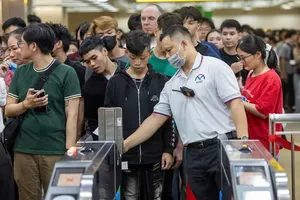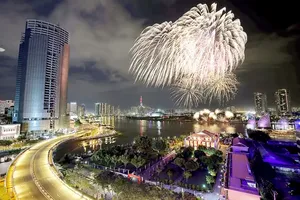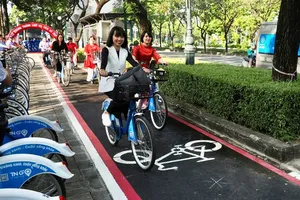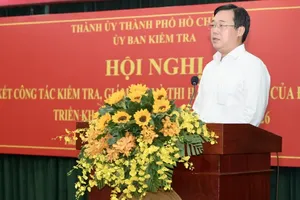
Although this goal is set in the context of too many difficulties, but there is a realistic basis to expect success.
Entering the year 2022, the southern largest city has faced unprecedented difficulties for the first time after the economic reforms in Vietnam in 1986 with the goal of creating a socialist-oriented market economy. In 2021, Vietnam’s economic growth slowed to its weakest in at least three decades, buffeted by the Covid-19 pandemic with the negative GRDP growth rate at 6.74 percent, many economic activities had to be suspended to prevent the risk of the Covid-19 pandemic resurfacing, the tourism industry completely collapsed with no signs of recovery.
From the beginning of the fourth quarter of 2021, the city has been proactive and determined to switch to the new normal state of safe adaptation, flexibility, effective control of the Covid-19 epidemic according to the government’s Resolution 128 to resume activities after four months of restrictions.
However, the recovery is very slow, mainly in the industrial production and construction sectors; therefore, it is difficult to make up the decline in the third quarter of 2021.
Economic growth in the third quarter was negative 24.97 percent and the fourth quarter of 2021 was nearly negative 12 percent compared to the same period last year.
Moreover, mechanism problems and inadequacies of regulations in mobilization of investment resources including state budget and private investment, efficient absorption of capital have been hindering the southern largest city’s growth.
In addition to the serious decline in economic growth, the city has also revealed many shortcomings towards the sustainable development goal, such as economic structure, labor, population, infrastructure, and urban management. This threatens the position and role of Ho Chi Minh City in the South as well as its role as the locomotive of economic growth in the country.
Therefore, the southern metropolis must make great efforts to restore economic growth and maintain its position as a major economic center of the country.
Moreover, the recovery of growth is not based on the status quo, but must be associated with the process of structural transformation, improvement of growth quality, rapid implementation of the digital transformation in the economy, and building a smart city towards the goal of sustainable development. This is a challenge for HCMC not only in 2022 but also for sustainable development in the long term.
The 2022 target of a 6 percent-6.5 percent GRDP growth rate set by the city authorities has demonstrated the city government’s determination based on sound ground.
Although a part of the supply chain has been broken and many businesses have lost the ability to self-recover, the basic economic infrastructure of the city remains the same, over 90 percent of enterprises in the industrial and construction sectors are recovering their activities.
Even in 2021, 5 out of 9 service industries posted higher growth rates than the same period last year, of which the information and communication industry increased by 6.08 percent while finance - banking – insurance sector surged by 8.16 percent, science and technology by 3.8 percent; education and training by 3.12 percent, and medical and relief operations society increased by 28.68 percent.
Besides, export turnover was estimated to increase by 2.8 percent and import turnover hiked 24.9 percent year on year. Foreign direct investment capital (FDI) was estimated to increase by 11-15 percent. Especially, credit and banking activities still maintained and grew steadily, partly contributing to the increase in state budget revenue.
Total capital mobilization of credit institutions was estimated to increase by 7.5 percent while a total credit balance increased by 10.7 percent and remittances to Ho Chi Minh City were estimated at US$6.6 billion, an increase of nearly 9 percent compared to the same period in 2020.
These above-mentioned factors have contributed to the city’s growth.
According to the principle of the market economy, economic activities will recover by themselves after the State allows them to operate again, all restrictions have been removed, and activities in international and domestic logistics and transport have been resumed.
However, to develop policies to create more favorable conditions for Covid-hit Vietnamese private enterprises to survive and get ahead after the four waves of the coronavirus pandemic. Therefore, the State through its functions must give them support.
As of now, most countries are using financial support packages and loosening credit policies to stimulate growth in order to recover the economy. In order to recover and develop sustainably from 2022 to 2025, Ho Chi Minh City needs to work towards two goals.
Firstly, in 2022 the city should focus on recovering production and business, restoring broken production and supply chains, helping businesses who have temporarily suspended operations to re-enter the market.
Secondly, from 2023, the city should promote the growth recovery process associated with the program of digitization and economic restructuring. To achieve the above goal, it is necessary to implement a group of financial - credit solutions that are instrumental in supporting the market, including increasing public investment to stimulate demand; providing financial support through tax and fee exemption and reduction and credit support through preferential mechanisms, credit incentives, and loan interest compensation.
Previous experience for years has shown that if the southern largest city spends one Vietnam dong on budget capital, it will attract 8-10 dong of social investment capital. Thus, it is the State's investment that is the prime mover to attract private investment. However, capital mobilization needs a breakthrough to remove bottlenecks in public investment procedures to absorb capital effectively.
Specifically, it needs to improve the investment environment, ensure supply, labor quality, and complete urban infrastructure. The city will attract private investment through investment mechanisms in new projects and expanding production and business, strongly attracting investment in real estate and financial markets, effectively using the city’s capital market tools.
Last but not least, the city should remove obstacles in investment licensing procedures due to overlapped and conflicted regulations for outstanding investment projects, especially in the field of construction and real estate to quickly attract private investment. The acceleration of public investment will increase aggregate demand exponentially.
Thus, the promotion of public investment in local public economic infrastructures can achieve two goals of economic recovery and solving infrastructure problems.
Therefore, it is necessary to create a breakthrough in administrative reform, improve the efficiency of public administration, reform of public administrative services to serve businesses and people in the group of solutions with the least investment costs.
The Provincial Competitiveness Index (PCI) of Ho Chi Minh City in recent years has not been commensurate with the position and role of the city (from 8th position in 2016 to 14th position in 2020); therefore, the city ought to improve this indicator.
The city must take the lead in exploiting digital technology, connecting information between industries, fields, and locations; hence, connecting business support mechanisms into a unified network with a transparent view of placing businesses at the center; developing digital government, reducing the cost of time and informal costs for businesses.
If the city administrations can remove institutional bottlenecks well to facilitate administrative procedures for businesses, businesses will rebound from the Covid-19 pandemic.
























